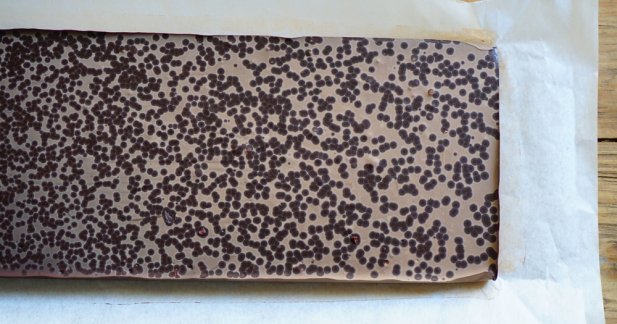
What Is Chocolate Bloom?
July 18, 2023
Have you ever bitten into a delicious piece of chocolate only to discover a weird white coating on its surface? Don't worry, it's not something to panic about! What you've encountered is called chocolate bloom. Here's what it means.
Types of Chocolate Bloom
If you're a chocolate lover like me, you've probably encountered a mysterious whitish coating on your favorite sweet treat at some point. Fear not! This is known as chocolate bloom, and it's a common occurrence that can happen to both dark and milk chocolate.
Fat Bloom
Fat bloom is the most common type of chocolate bloom. It appears as a dull, whitish layer on the surface of the chocolate, giving it a less appealing appearance. But what causes this phenomenon? Well, it all comes down to the fats present in chocolate.
Chocolate contains cocoa butter, which is a type of fat. When chocolate is exposed to temperature fluctuations, the cocoa butter can migrate to the surface and solidify, resulting in fat bloom.
This often happens when chocolate is improperly stored, exposed to warm temperatures, or experiences rapid temperature changes. So, if you accidentally leave your chocolate bar in a hot car or subject it to temperature swings, fat bloom might make its unwelcome appearance.
The good news is that fat bloom is harmless and doesn't affect the taste or safety of the chocolate. It may alter the texture slightly, making the chocolate less smooth and slightly grainy, but it's still perfectly edible.
Sugar Bloom
Unlike fat bloom, sugar bloom occurs due to the presence of moisture on the chocolate's surface. When chocolate comes into contact with moisture, such as high humidity or condensation, the sugar in the chocolate absorbs the moisture, causing the sugar crystals to dissolve and then recrystallize on the surface. This results in a grainy, sandy, or powdery appearance on the chocolate, giving it a less desirable texture.
Sugar bloom can also happen when you refrigerate or freeze chocolate and then expose it to warmer air, causing condensation to form on the surface. It's important to note that sugar bloom doesn't affect the taste or safety of the chocolate either, but it can make the texture less enjoyable.
To prevent sugar bloom, it's best to store chocolate in a cool, dry place away from strong odors. Avoid refrigeration unless necessary, and when you take chocolate out of the fridge, allow it to come to room temperature before unwrapping to minimize the risk of condensation.
While both fat bloom and sugar bloom can affect the appearance and texture of chocolate, they don't indicate spoilage or compromise the flavor. So, the next time you spot that whitish layer on your favorite chocolate treat, don't panic! You can still enjoy your chocolate treats without any worries.
Have you experienced chocolate bloom on your stash? Share your thoughts in the comment section below and don’t forget to follow our Facebook and Twitter accounts for more fun and interesting chocolatey ideas!
- Why You Should Try Chocolate-Covered Nuts (And How to Make Them!) - April 22, 2025
- Easy Chocolate Easter Nests Recipe - April 15, 2025
- The Best Chocolate Gifts for Easter (That Everyone Will Love!) - April 8, 2025


